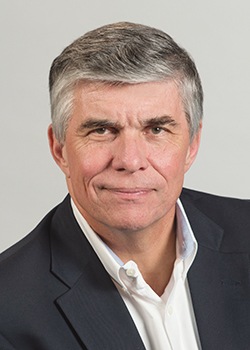Winning the Business
by February 3, 2014 12:00 am 74 views

Your firm has responded to the request for proposals and now you’ve learned you’re one of the finalists for the business.
Next up is an interview with the governing board, committee or decision-making entity. They want to meet your team and learn more about your credentials in a presentation setting.
Following the presentations, they will make a decision on which firm to hire.
It’s unlikely the ultimate decision will be determined solely on the live presentation. However, it can have a strong bearing on the hiring decision. The reality is that those selected to be finalists more than likely meet the essential requirements for the project: size, stability, scope of experience and expertise, track record, etc.
The live presentation/interview is an opportunity for the client to develop a comfort level with those to be entrusted with making their vision a reality.
Team presentations require careful planning and rehearsal if not to win the business, then certainly not to lose it.
There are some essential factors that go into an effective team presentation.
Designate a Quarterback — The quarterback should be a comfortable presenter and engage easily with people. The quarterback should make opening remarks and introduce the members of your team.
While the quarterback may have a role in the actual presentation, their primary role is to keep the presentation flowing and keep the team on track. The quarterback is also the one to toss a lifeline to a team member who might be struggling in their segment.
The quarterback should also deliver any closing remarks your firm wants to make and direct questions to the most appropriate team member.
Plan and Practice Transitions — One of the most neglected and often awkward aspects of team presentations are transitions. Each team member may have their respective parts down pat, but often are not prepared for handing off to the next team member.
Make sure your team knows how and whom to handoff to. An option is to have the quarterback step in and introduce each segment as the interview progresses. But that can eat up valuable time.
The best course is to plan and practice for the transitions. And they can be as simple as, “And now I’d like to turn it over to John, who will discuss the project schedule.”
Watch the Clock — Many, if not most, interview presentations have a time limit. When the limit is reached, you’re done, as far as many interviewers are concerned. The last thing you want is to have them finish listening before you finish talking.
The fact is, presenters really don’t know how long their presentations are until they have gone through at least one dress rehearsal. My observation from years of working with presenters is that, if a presenter does not go through a full dress rehearsal, the presentation they thought was 20 minutes becomes 40 minutes.
This is especially true in team presentations. Assign someone the task of keeping your team on schedule. Ideally, they would not have a formal role in the presentation itself. This way they can watch the clock and convey prearranged signals to team members as needed.
Defer to the Quarterback — Team members involved in the presentation should look to the quarterback for signals throughout the presentation. If the presentation gets behind schedule, the quarterback could make a comment such as, “As John briefly discusses … ” That’s a cue for John to move expeditiously through his segment.
Or, if a presenter has omitted a key piece of information, it is up to the quarterback to say something like, “Beth, take a moment to talk about our procurement process … ”
Avoid Over-Answering — Let the quarterback direct questions to the most appropriate team member. By all means avoid over-answering a question. The quarterback will determine if additional information and elaboration is necessary, and from whom.
Remember that interviewers are assessing not only the specific credentials of your team, but also your chemistry, engagement and overall personality. This is the time to separate yourself from the pack and project yet another positive point of difference and give them yet another reason to say, “You’re hired.”
Richard McKeown is senior vice president and chief public relations officer for Cranford Johnson Robinson Woods. He has provided executive communications coaching for more than 20 years.
